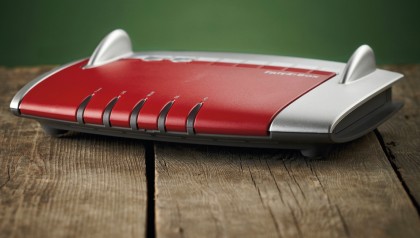How to get super-fast Wi-Fi in every room
Banish Wi-Fi woes
Every router has a port labelled 'WAN', which stands for Wide Area Network. It's the port used to plug into your phone line or cable socket to connect it to the internet.
For all our attempts to maximise the performance of your network, if all you do with it is connect to the internet (rather than, say, stream video around the house or mirror an iPad over AirPlay), it's that connection that will be the bottleneck.
While 802.11n has a theoretical maximum throughput of 450Mbps (that's megabits; equivalent to 37.5 megabytes/sec) your internet connection is likely to have a maximum data rate of somewhere between 2Mbps and 120Mbps.

Most of us have connections at the bottom end of that range, and like Wi-Fi, the real-world figure is much lower than the theoretical maximum.
You can check the actual speed of your internet connection by heading to SpeedTest and running the test there; it's a good way of discovering how close to your ISP's advertised rate you're actually getting. It compiles results from users' tests and from those puts together league tables of ISPs. So if you're not happy with yours, you can look at which ISPs are delivering data throughput that more closely resembles their advertised rate.
It's worth doing the test at different times of day to see how the rate varies. Your internet connection is, in reality, 'shared' with your neighbours. That is to say, that if lots of people in your street use, for example, a BT or Virgin Media connection, you'll be effectively sharing bandwidth with them. That's known as contention.
Contention ratio – the degree to which bandwidth is shared – varies from ISP to ISP. But it it's likely that your internet connection will slow significantly at peak times, such as the evening, when your neighbours are also online.
Get daily insight, inspiration and deals in your inbox
Sign up for breaking news, reviews, opinion, top tech deals, and more.
There's another factor that affects your internet speed: traffic shaping or management. Most ISPs use some form of management to limit the effect the most bandwidth-hungry users have on their network. Virgin Media, for example, throttles users' connections at peak times if they exceed a certain figure for downloads during a specified period. It also limits the speed of traffic to and from newsgroups and peer-topeer networks during peak times, but claims that this only affects five per cent of its customers.
Other ISPs place limits on how much you can download in a month (which should be stated in your contract) or, like Virgin, limit speeds for some users during peak times.
Security: Deter snoopers
The only way to connect to a wired network is to physically plug your device into a router or data socket with Cat 5 cable. That makes it inherently secure; it's unlikely that someone would break into your house to access your network.
Wireless networking has no such inherent protection, so you should take steps to make it as secure as possible. The most obvious is to use a robust password, but which system should you use? Of the three options likely to be available on your router, WPA2 offers the best protection. WPA is the next best option, and compatible with more devices, but avoid WEP.
Choose a password that's easy to remember but difficult to guess, and use as many different characters as possible. Change the SSID from its default. You could also prevent the SSID from being broadcast, thus making it invisible to opportunists in your neighbourhood. That, however, means that you'll have to type it in manually every time you want to connect a new device.
In AirPort Utility 6, the SSID and password are set in the Wireless tab. Clicking 'Wireless Options' on that page allows you to select 'Create hidden network', which hides the SSID. You should also change the default username and IP address for your router's admin access.
For additional security, switch off any options in your router's settings that allow your network to be accessed from elsewhere on the internet, such as Remote Access or Remote Management, unless you really need them. This includes disabling UPnP. If you do need access remotely, make sure it's set to HTTPS. In AirPort Utility, switch off Back to My Mac, unless you know you will use it.
Finally, once you've finished making security changes, make sure you log out of the admin area properly.
Do
- Change the default SSID and password, and the admin username and password on the router your ISP gives you.
- Position your router as close to the centre of your house and as far away from walls as possible.
- Use Powerline networking to extend your network.
- Check your broadband speed on speedtest.net.
Don't
- Put the router on the floor behind the sofa.
- Leave your network unsecured; use WPA2 and a sensible password.
- Plug your Powerline adapter into a multi-point power strip.
- Change anything other than username and password in your router's settings unless you know exactly what you're doing.
- Enjoyed this article? Get more tutorials, guides, and tips on how to get the most from your Apple devices inside MacFormat. Take advantage of an exclusive offer in our sampler today.
- Want to find out more about 5G? Check out our dedicated 5G hub!